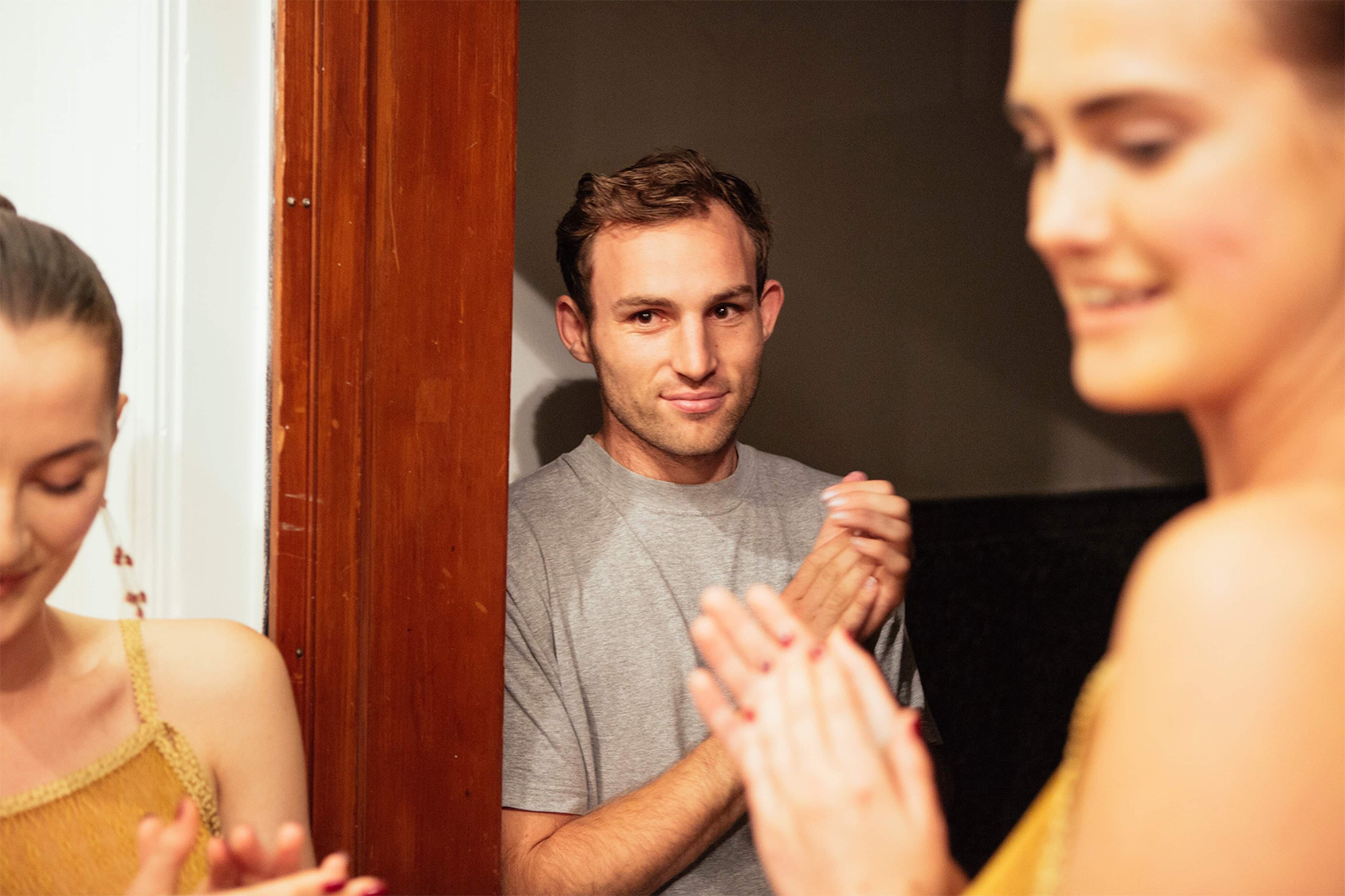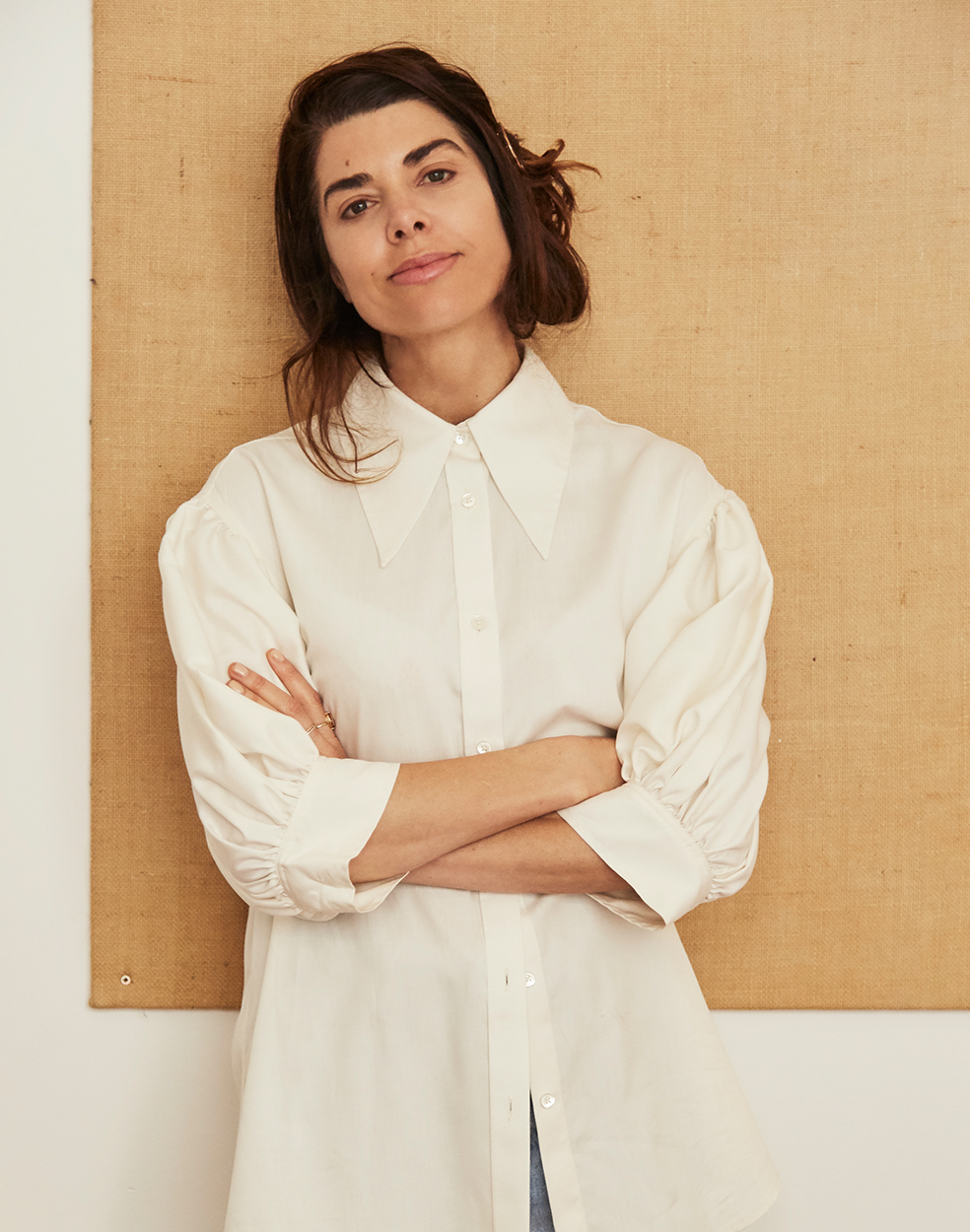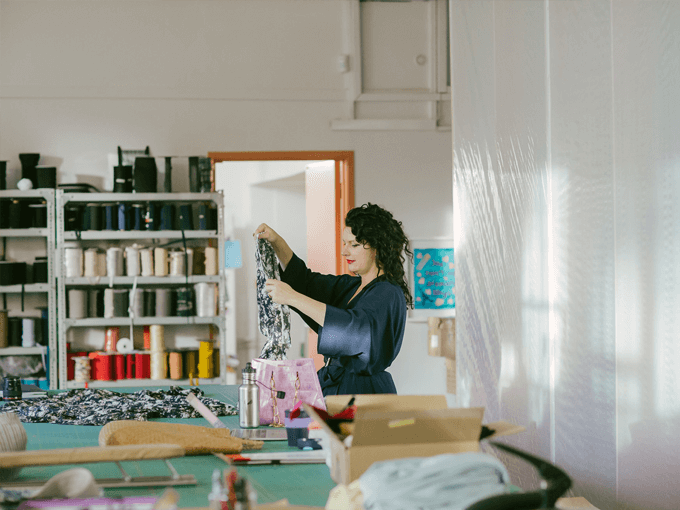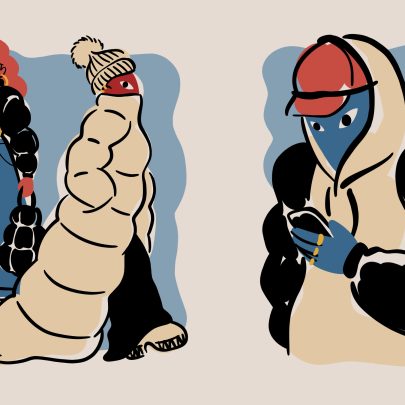May 2, 2019 Fashion
Katie May Ruscoe of Fashion Quarterly takes a look at our increasingly fragile and under-threat local fashion industry and asks: Are we witnessing the ‘last hoorah’ for NZ fashion?
Late last year, just as the party season was getting into full swing – and just as many were no doubt breaking out or eyeing up one of her signature silk pieces – our queen clothier for all occasions glamorous, celebratory and just a little bit fancy called last round.
In a candid and intimate interview in Viva magazine with her friend and long-time fan, broadcaster Noelle McCarthy, Kristine Crabb confirmed that after nearly 15 years in business, she’d be winding down her much-loved Miss Crabb label – a move that caught both fans and industry peers by surprise, especially coming off the back of what had appeared to be a successful commercial run for the brand in recent years.
But should it have been a shock? In an impassioned press release sent shortly after the announcement, fellow designer Annah Stretton mourned Miss Crabb as another casualty of what she saw as an increasingly fragile and under-threat local industry, going so far as to ask whether we were witnessing “the last hoorah for Made in New Zealand [fashion]?”.
While Kristine herself made clear that the decision to close the label was very much considered and very much her own, in her interview with Noelle, she too was forthright about the growing challenges of running an independent, locally made fashion label in Aotearoa – pointing in particular to stifling creative and commercial pressures, and the stress of securing reliable production in an industry that “shrinks a little bit more” each year.
“Earlier this year, we were trying to find a sample machinist and we just couldn’t find anyone. That’s sad, isn’t it?” she said.
Keep reading: Miss Crabb’s loyal celebrity customers share their favourite memories of the brand
The topic of ‘made in New Zealand’ fashion – what it means, what it doesn’t and what its future looks like – was a hot, often controversial, topic throughout 2018.
The start of the year saw the end of two long-standing made-in-New Zealand brands: womenswear label Andrea Moore went into liquidation in January, and in March Auckland-based shoemaker Minnie Cooper called time after 30 years of production; founder Sandy Cooper explained that she was no longer able to compete with the influx of low-priced fast fashion to the market.
By mid-year, the closure of two of our biggest fashion textile suppliers – the Charles Parsons fashion division and Cooper Watkinson Textiles – was causing headaches for designers, and prompted advocate Paul Blomfield to implore consumers to buy New Zealand-made in order to support our shrinking local industry.
Then, of course, there was that exposé – an investigation by The Spinoff’s Madeleine Chapman into World’s mislabelling of offshore-produced T-shirts that prompted howls of consumer and online outrage (much of it tinged with schadenfreude) and forced many of our top labels to clarify or defend their own labelling and production practices.
Annah – founder of the Annah S label and a 25-year industry veteran – says she has been sounding the alarm on the state of the industry for some time now, but that the events of the past year in particular “should be starting to concern us”.
“We’ve lost some really strong players – some of their own accord and some through massive external pressures and that includes both designers and suppliers. When I started out we were rich in choice; it was easy to manufacture out of New Zealand because everything was here. That’s not the case now.”

Wynn Cranshaw, designer of Wynn Hamlyn.
Former New Zealand Institute of Fashion Technology programme developer Carly Tolley has also been outspoken about the decline of the local garment manufacturing industry, and paints a fairly straightforward economic picture of how we ended up here.
“In the early ’90s, when importing was first opened up, the duty on clothing was still about 25 percent. Gradually, over 20 years, that duty was reduced, so by the time you hit the early 2000s, there was no duty. As it came down and down, it became much cheaper to import and much more expensive comparatively to manufacture here.”
This period coincided with China’s peak as the world’s biggest clothing and textile manufacturer, and in 2008 the New Zealand-China Free Trade Agreement (which paved the way for China’s current position as our biggest trading partner) made access to this vast pool of resources even easier for local designers and clothing importers.
From 2007 to 2016, clothing was our top import from China, accounting for 11 percent of the total import value from the manufacturing behemoth.
Carly points out that in recent years this percentage has softened significantly. With labour costs rising sharply, ‘Made in China’ is no longer synonymous with ‘cheap’, and increasingly designers not just in New Zealand but globally are moving production to emerging and more competitively priced producers such as India, Bangladesh and Vietnam (which also raises important questions around the ethics and sustainability of what we wear).
Despite this, Annah believes China is still the go-to producer for Kiwi labels looking to go offshore, just not necessarily for strictly economic reasons. “[In China] you have workers who have come from generations of clothing makers; these really are skilled craftspeople who can do things we just can’t do here anymore, or have actually never been able to do. In many cases, it’s not that much cheaper [to produce in China] than it would be to do here – we just don’t have the capability.”
Wynn Crawshaw is one of the most exciting designers to emerge in New Zealand in recent times. Launched in 2015, his elegant, technically led womenswear label Wynn Hamlyn was almost immediately marked as one to watch, and in the years since he’s been steadily establishing the brand’s presence both locally and internationally, most recently turning his focus to the notoriously difficult to crack Northern Hemisphere market.
A perfectionist when it comes to the finer details, Wynn has so far produced all Wynn Hamlyn garments locally (his current collection even features chunky resin toggles handmade by his mum), but he’s recently made the decision to take some of his knitwear production to a factory in Danyang, China.
“It’s just the really complex stuff – anything with any complexity in knitwear takes a lot of skill and time to create,” he says, admitting that although we have the resources to do it locally, they’re extremely limited and consequently cost prohibitive.
“We do want to keep our garments relatively affordable. It’s also a skill and expertise thing because it’s such a niche industry here, but it’s everyday stuff in China.”
Wynn acknowledges that there is some stigma around manufacturing in the region (he was one of only a few Kiwi designers who were happy to discuss offshore production for this story), but believes that as long as designers are transparent, this unease is largely unwarranted. “There is a bit of a perception hangover from the quality and [factory] conditions back in the day, but both of those aspects are massively improved today.”
Leanne Greaves is another Kiwi designer who produces knitwear in China. Like Annah and Wynn, she has nothing but praise for the expertise of those making her garments, and the conditions in which they make them. “We work with an ethically accredited factory in Shanghai. They produce the most beautiful knitwear, just stunning – and in reality better than what we have the capacity to make here.”
Despite producing some garments offshore (she also works with an ethical, sustainable factory in Noida, India), Leanne – who creates luxury streetwear for women under the Liann Bellis label – is fiercely protective of our local industry. Having started her career making high-end childrenswear in the 1980s, she’s seen first-hand the decimation of what was once a thriving clothing-production sector.
“It really was lovely back in the ’80s. I had my own small factory in Tauranga and a team of the most talented, happy production staff,” she recalls.
“It’s sad that New Zealand doesn’t do more to protect its own industry – it could be a booming source of employment for the country, but with the level of imports to compete with, currently it’s just not viable.”
Locally, Leanne works with a small team of workroom staff in Nelson, where the label is based, as well as an independent cutter and two factories in Auckland.
When she first launched in 2010, she worked predominantly with a Nelson factory, but like many regional clothing manufacturers, it has since gone out of business. Whereas many local designers have expressed frustration at not being able to find skilled production staff (cutters and sample machinists particularly appear to be in short supply), Leanne says she’s regularly contacted by people looking for work.
“I’d love to hire them all – especially the young ones wanting to learn because they are great skills to learn and skills that are sadly dying out. Unfortunately, though, we just have to keep our team small to stay viable.”
Wynn too claims to have had little trouble securing local production but cautiously does offer a reason as to why good help may be hard to find.
“The problem here is that every designer is producing their collections to the same [seasonal] schedule, so the makers, including our own, are flat out for two or three weeks a couple of times and year, then the rest of the time it’s quiet.”
Wynn, who has been open about questioning fashion’s dogged adherence to seasonal releases, both in terms of the creative pressure on designers and it’s growing irrelevance in an increasingly globalised industry, believes that a shift away from this traditional model would go some way towards giving local producers consistent work year-round, which would in turn support, and possibly even grow, what’s left of our local industry.
His own move onto the Northern Hemisphere schedule means he’s now able to produce in the ‘downtime’ when other local designers have already finished their Southern Hemisphere production runs.

Mahsa Willis
One local designer who has eschewed the seasonal model altogether is Auckland-based Mahsa Willis. Despite the relative quietness with which she launched her eponymous Mahsa label in 2016, her lean, considered offering of romantic, voluminous shirting and pared-back, androgynous, tailored pieces seemed to immediately strike a chord with a certain crowd of artful, no-fuss Kiwi women.
Her signature Bow blouse – a relaxed, Victorian-style shirt with balloon sleeves and an oversized pussy-bow – suddenly appeared everywhere from school runs to gallery openings, and like most of her pieces, continues to be re-cut (and sell out) in various fabrics and colours.
As Mahsa explains, she didn’t set out to make a statement by scrapping seasons. “When I started, it was small and really based around my own needs and what I thought other women might enjoy – pieces that were utilitarian meets romantic meets timeless, and that you could just throw on and wear across seasons without feeling like you’re not ‘trending’ after six months.”
Although she’s quick to shy away from the notion that she’s “any sort of expert on production”, her current model seems to be working well for her and those she works with: new collections (or ‘moods’) are released on a loose, trans-seasonal basis, rather than to a strict schedule, while pieces that prove particularly popular enter the canon of Mahsa classics and are re-cut regularly to meet customer demand.
By offering pieces on a pre-sale basis, Mahsa’s also able to use the revenue to directly pay for production, helping to avoid reliance on credit. It also means she very rarely has to put items on sale.
Currently, all Mahsa pieces are produced in New Zealand. “It’s early days, but I do feel like I have a responsibility to keep producing here, simply because each time I cut something it feels like the production gets better and better, and our relationship with our makers also gets better and better,” she says.
Mahsa also sees New Zealand made as a unique marketing point – her campaign images (many of them shot by prominent Kiwi photographer Derek Henderson) have a serene, bathed-in-nature feel that’s distinctly New Zealand without being obvious or hokey.
“We do want [the brand] to stand up on its own internationally, but also in New Zealand we really are in a unique position in the world, both geographically and socially; it’s nice to be inspired by what you’ve got and who you’ve got.”
This sentiment is echoed by Wynn. “We don’t want to position ourselves as hardcore ‘made in New Zealand’ because it’s just not a core value of what we do, but that said, New Zealand-made just has a different feel to it.”
Elaborating on this, he offers an unlikely comparison – to food. “If you look at cafés and restaurants now, there’s that real focus on locally sourced, locally made products that hasve a story to them. That’s what [consumers] are really into now, and that’s an opportunity for fashion here too.”
A uniquely New Zealand proposition combined with an international focus is something that both Carly and Annah agree is the key for New Zealand-made labels hoping to thrive in a difficult, massively disrupted market.

Mahsa designs.
As Carly points out, designer clothing is a luxury for the vast majority, and New Zealand, for all its high living standards, is a low-wage economy. This combined with the proliferation of fast fashion in the market means it’s fruitless to simply tell New Zealand customers to only buy local.
“In New Zealand we can’t compete with the mass market. New Zealand is also a small market, and [designers] can no longer just keep relying on local sales.”
She points to current fashion favourite Maggie Marilyn and high-end streetwear label Not For You as examples of New Zealand-made labels that have found success by leapfrogging the local market altogether and instead focusing on international luxury markets – in particular China and Europe.
Like many creative industries, fashion in New Zealand currently finds itself in a period of immense challenge and change. Annah, however, remains cautiously optimistic. “We’re an incredibly resourceful, creative and entrepreneurial country,” she says. “We’ve also seen these sort of challenges before – in music, in publishing. As an industry, we need to work out what sets us apart, and what will enable our next generation to thrive – because there is still a massive appetite for wanting to get into the industry.”
Asked about her hopes for her future in the industry, Mahsa offers a humble take. “It is really hard, and I don’t have stars in my eyes… It’s not my intention to make a ton of money. If I can keep doing what interests me creatively and make enough to support myself and my kids, I’ll be happy.”
This article originally appeared in Fashion Quarterly, Issue 1, 2019 and on the FQ website, and is shared with permission.






